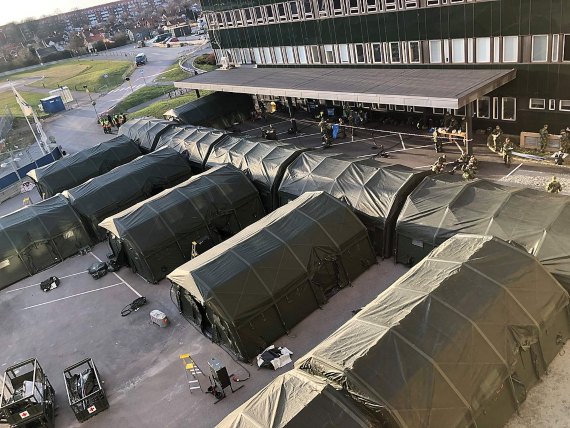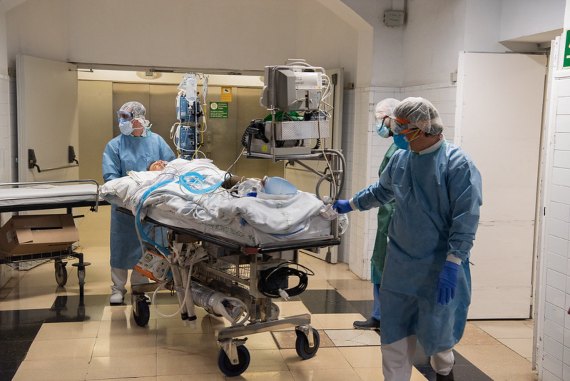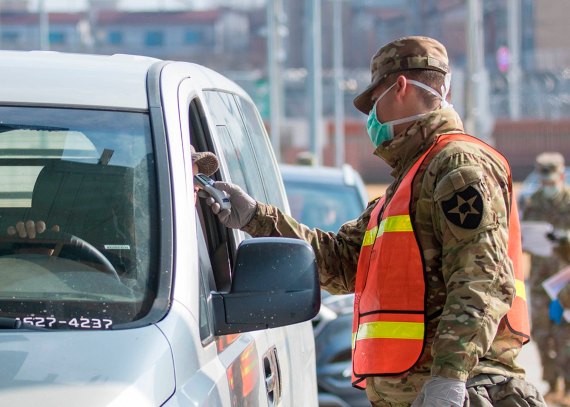The pandemic of the SARS-CoV-2 coronavirus, which causes COVID-19, has spread a wave of panic across the globe because of the fear of contagion. But another wave has followed in its wake, that of outrage at the inability of individual governments to effectively combat this scourge. Protests have taken place in many countries, which, rather curiously, have been instigated in a variety of places by organisations representing a spectrum of political orientations, targeting very different or even opposing aspects of the government measures. If any conclusion can be drawn from all this, it is that the collective sentiment of much of humanity at this moment seems to converge on one idea: we were not prepared, and for that reason the response to the pandemic has been ineffective or insufficient.
This lack of preparation is shocking, especially considering that, for the scientific community and international bodies, this pandemic has come as no surprise. One need only mention a few examples from recent years. In 2015, software magnate and philanthropist Bill Gates warned of the danger of a pandemic capable of killing ten million people. A year later, the Global Priorities Project at Oxford University and the Swedish Global Challenges Foundation reiterated the risk of global catastrophe of this kind. Then in March 2019, the Director General of the World Health Organization (WHO), Tedros Adhanom Ghebreyesus, stated: “The question is not if we will have another pandemic, but when.” And just three months before the outbreak of the new pneumonia in Wuhan, China, the Global Preparedness Monitoring Board, a body created by the WHO and the World Bank, warned of the imminent risk of a respiratory pandemic that could lead to between 50 and 80 million deaths.
The capacity of health systems
There has been no lack of warning signs either. Over the past century, it could be said that at the very least, the outbreaks of H5N1 avian flu, the Severe Acute Respiratory Syndrome (SARS), the 2009 H1N1 flu pandemic, the Middle East Respiratory Syndrome (MERS) and Ebola should have raised enough red flags to put the world on guard. In 2018, the WHO recorded for the first time outbreaks of six of the eight emerging pathogens considered the most worrying.

The truth is that a large portion of the world might actually have believed it was prepared. In March of this year, a team of WHO experts published in The Lancet an analysis of the level of pandemic preparedness in 182 countries, according to data provided by the nations themselves in 2018 —before the outbreak of the new coronavirus— through the self-assessment tool State Parties Annual Reporting (SPAR), in accordance with the standards of the International Health Regulations (IHR), a 2005 agreement signed by 196 countries and aimed at improving global health security. The WHO study found considerable differences between states, but concluded that, “half of all countries analysed have strong operational readiness capacities in place, which suggests that an effective response to potential health emergencies could be enabled, including to COVID-19.”
However, this conclusion does not dovetail with what subsequently happened. In fact, some of the most developed countries, with strong health systems, have been among those most affected by the pandemic, such as the USA, the UK, Italy, France and Spain. In contrast to the usual lukewarm political discourse, perhaps one of the clearest in this regard has been that of Spain’s Minister of Science and Innovation, astronaut Pedro Duque, who in April acknowledged to the newspaper El País that his country lacked a comprehensive and self-contained plan against pandemics.
The cycle of panic then forget
In a commentary on the WHO study in The Lancet, epidemiologist and global health expert Kathryn Jacobsen, of George Mason University (USA), summarised why warnings have not been effective, nor has the capacity of health systems been sufficient, to prevent the disaster caused by COVID-19: “The cycle of panic then forget has become routine.” Outbreaks of infectious diseases create great anxiety and attract considerable attention, but all of this is quickly forgotten once the danger recedes, and the need for greater preparedness slides back down on the list of global priorities, the expert explained.

An example of this was reported on by The New York Times last March. Between January and August 2019, the Trump administration conducted a mock drill called Crimson Contagion, which simulated a large-scale deadly flu pandemic scenario resulting in more than half a million deaths in that country. The draft of the final report, to which the newspaper had access, noted “just how underfunded, underprepared and uncoordinated the federal government would be for a life-or-death battle with a virus for which no treatment existed,” the article said. Nor was it the first exercise of its kind, since the initiative followed a line already present under the previous Obama administration.
And yet, according to the NYT, all these efforts failed to move up the political ladder beyond the middle levels of the bureaucracy: “The knowledge and sense of urgency about the peril appear never to have gotten sufficient attention at the highest level of the executive branch or from Congress,” the article noted.
South Korea’s success
In the hecatomb caused by this pandemic, there have been few examples of countries that have responded effectively against the first wave; the most commonly cited example is South Korea, which fought back against the initial attack of the coronavirus without imposing drastic or widespread confinement measures on its population. But this did not come about by chance. In 2015, Korea suffered an alarming outbreak of the MERS coronavirus, which is less transmissible but more lethal than the current SARS-CoV-2. The episode resulted in 38 deaths out of a total of 186 infected. “The outbreak unveiled the weak points of infrastructure in our medical system, especially of preparedness for emerging global infectious diseases,” a Seoul National University expert group wrote in 2018.

On that occasion, the lessons learned did not fall on deaf ears. The shortcomings identified in Korea during the MERS outbreak “prompted the government to reform the healthcare system, and healthcare sectors to invest further in infectious diseases and infection control,” added the report, headed by internal medicine specialist Myoung-don Oh. The result was a detailed plan that included large-scale testing, the isolation of cases, and contact tracing and quarantine, including electronic tracking of mobile phone and credit card data. Korea took measures that in other countries have been challenged on privacy grounds, but which led to an initial success in containment that was widely praised.
Cases such as Korea have become the model for other countries during the current pandemic, inspiring a test-trace-isolate strategy that many governments are now pursuing. However, there is one point that the experts stress: preparedness must be built in advance. In her commentary, Jacobsen outlines three main lines that follow established standards: achieving full compliance with the IHR, doing the same with the Sendai Framework for Disaster Risk Reduction (adopted in 2015), and ensuring that “plans for preventing, detecting, and controlling outbreaks of emerging infectious diseases [are] built on a One Health foundation that emphasises the interconnectedness of humans, animals, and ecosystems.”
All of this, Jacobsen stresses, requires a multisectoral and interdisciplinary effort to strengthen capacities, from laboratories to the health system, its human and material resources, and supply and logistics systems, involving all the social, environmental, political and institutional factors. Many experts have also highlighted the need to build international bridges of cooperation so that responses to future threats similar to the current one can take advantage of our globalized world. In the words of the WHO study, “all countries should invest in building greater preparedness against health emergencies.” Only then can this cycle of panic and forgetfulness be broken before the next major pandemic hits.
Comments on this publication